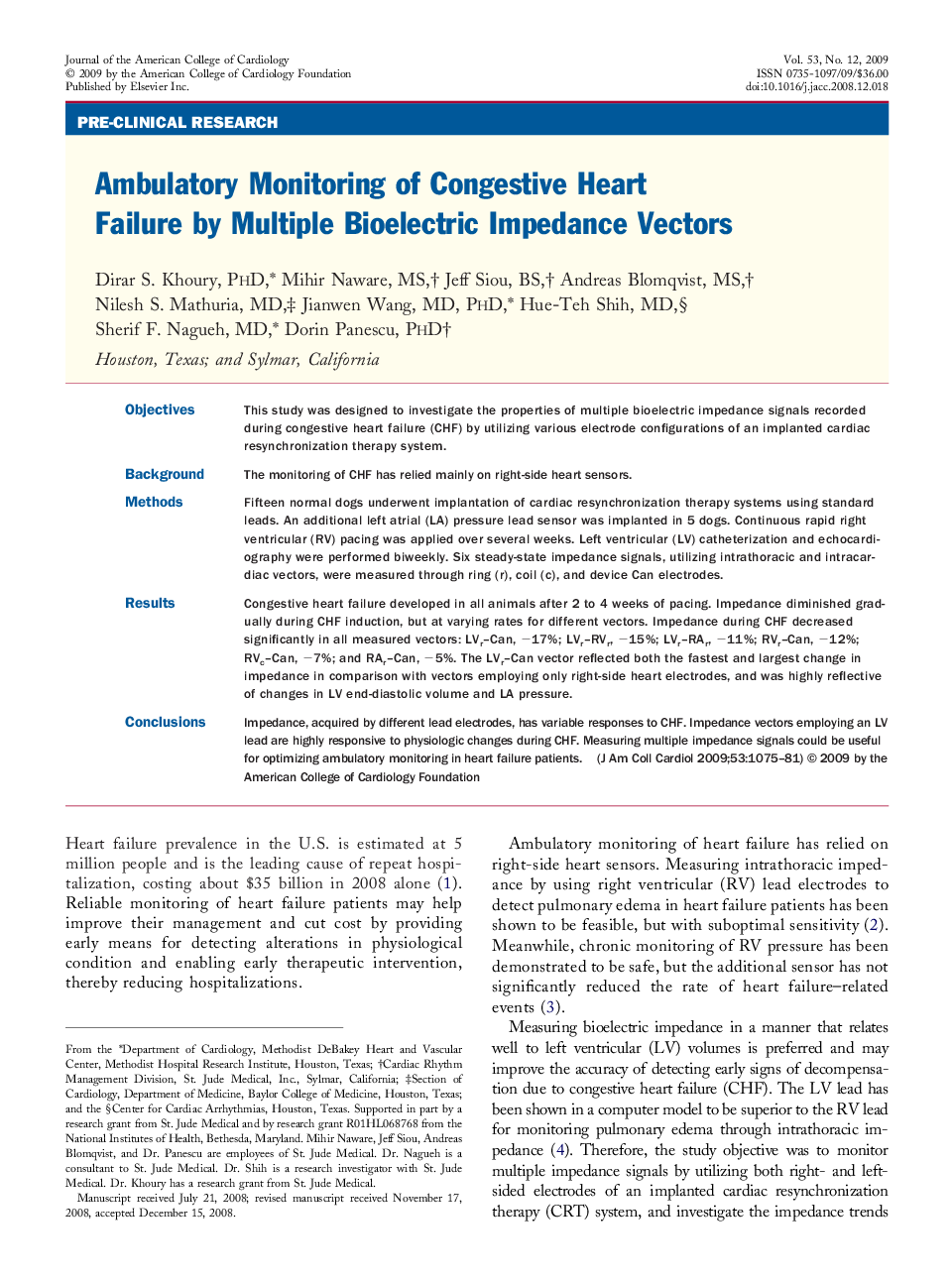| Article ID | Journal | Published Year | Pages | File Type |
|---|---|---|---|---|
| 2952826 | Journal of the American College of Cardiology | 2009 | 7 Pages |
ObjectivesThis study was designed to investigate the properties of multiple bioelectric impedance signals recorded during congestive heart failure (CHF) by utilizing various electrode configurations of an implanted cardiac resynchronization therapy system.BackgroundThe monitoring of CHF has relied mainly on right-side heart sensors.MethodsFifteen normal dogs underwent implantation of cardiac resynchronization therapy systems using standard leads. An additional left atrial (LA) pressure lead sensor was implanted in 5 dogs. Continuous rapid right ventricular (RV) pacing was applied over several weeks. Left ventricular (LV) catheterization and echocardiography were performed biweekly. Six steady-state impedance signals, utilizing intrathoracic and intracardiac vectors, were measured through ring (r), coil (c), and device Can electrodes.ResultsCongestive heart failure developed in all animals after 2 to 4 weeks of pacing. Impedance diminished gradually during CHF induction, but at varying rates for different vectors. Impedance during CHF decreased significantly in all measured vectors: LVr–Can, −17%; LVr–RVr, −15%; LVr–RAr, −11%; RVr–Can, −12%; RVc–Can, −7%; and RAr–Can, −5%. The LVr–Can vector reflected both the fastest and largest change in impedance in comparison with vectors employing only right-side heart electrodes, and was highly reflective of changes in LV end-diastolic volume and LA pressure.ConclusionsImpedance, acquired by different lead electrodes, has variable responses to CHF. Impedance vectors employing an LV lead are highly responsive to physiologic changes during CHF. Measuring multiple impedance signals could be useful for optimizing ambulatory monitoring in heart failure patients.
